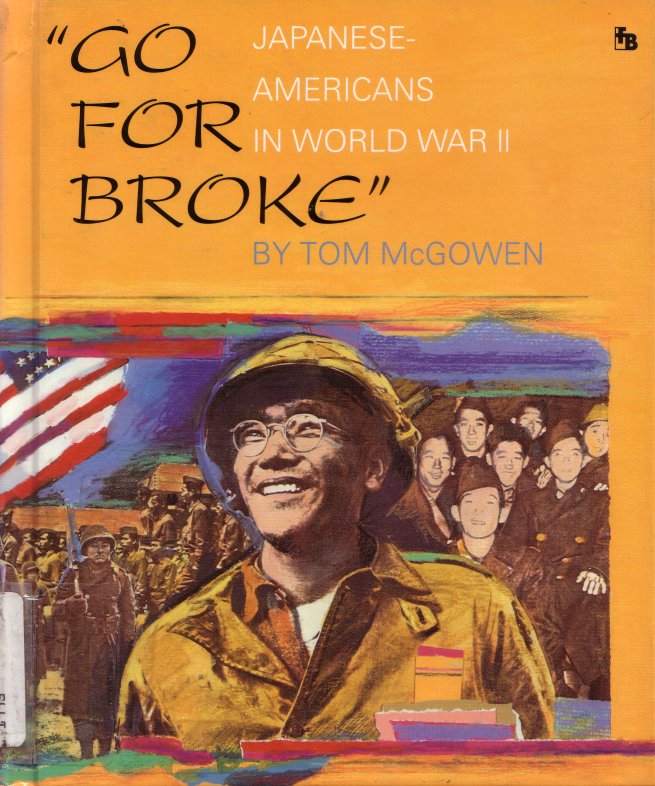
Go For Broke: Japanese Americans in World War II

This book for young adults starts out by talking about the racial prejudice against Japanese Americans on the west coast before the bombing of Pearl Harbor, and how this changed to hatred afterwards. It also points out that the teenage Nisei (those born in the U.S. of Japanese parents) were no different from other teenagers except for their race, but that was all that was needed for people to hate them.
The book notes how the Japanese Americans that were in the military were thrown out of it and how no others were accepted at the time. Then it discusses the assembly centers and the relocation centers.
The book points out that Japanese propaganda given to other Asian countries was along the lines of "we're all Asians and the U.S. is carrying on a racist war against us." Thus, allowing Nisei to join the U.S. military was being realized as a good idea for counter-propaganda. The Nisei of the 100th battalion chose the motto "Remember Pearl Harbor" as their own. Other Nisei were recruited and formed the 442nd combat team and their motto was "Go for broke".
Wanting to prove themselves the Nisei worked harder than almost any other soldiers. The 100th battalion was shipped to North Africa. They were then shipped to Italy where they were held as a reserve unit (and part of another unit), but then were called into active fighting. Shigeo Takata was the first of the men killed in battle. They were so impressive that one of the Generals asked for more men like them.
The book then goes on to describe some of the battles that the group was in. Starting with 1400 men, the unit ended up losing 900 killed or wounded so the 442nd regiment merged with them to keep it an all Nisei unit, although it was officially called the 442nd regiment and not the 100th battalion. Some of the German prisoners ended up getting confused, wondering if Japan had switched sides and was now fighting with the U.S. instead of against it.
The 442nd was then transferred to France. They were the ones who rescued the "trapped battalion", the 1st battalion of the 36th Division's 141st infantry which were surrounded by Germans. They not only got to the trapped men but kept going forward, capturing a slope the 141st had been unable to take, kept moving and split the German forces apart so the rest of the 36th Division could move in right behind them, sending the German army into retreat.
On December 18, 1944 the Supreme Court ruled all Japanese-Americans had to be freed from the internment camps. The 442nd had suffered so many casualties that replacement Nisei had to be sent, then the unit was moved back to Italy. They formed part of a group which consisted of the all-Japanese-American group, an all-black group, and an all-white group. ( Such discrimination was still going on in WW II against the blacks). The attack was supposed to be a diversion for a bigger attack elsewhere but the 442nd fought their usual way, overran the German positions, taking a major road in the process. Once the main attack got under way the German army was finished in Italy.
The book then talks about the Nisei who helped in the Pacific Theater by translating Japanese into English. They would question captives, translate any documents that were found, etc. Nisei in other positions are also discussed.
The book is very good, has a lot of extremely good photographs and is written in a style that is very readable and enjoyable.
Main Index
Japan main page
Japanese-American Internment Camps index page
Japan and World War II index page
|